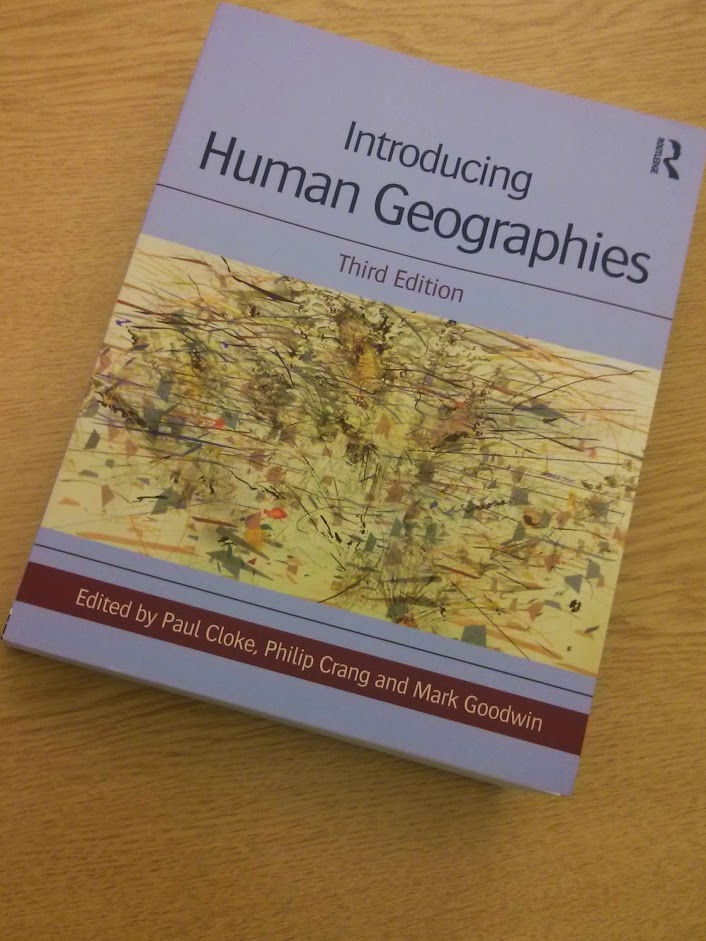
GIS chapter in ‘Introducing Human Geographies’
There is something in the physical presence of book that is pleasurable. Receiving the copy of Introducing Human Geographies was special, as I have contributed a chapter about Geographic Information Systems to the ‘cartographies’ section.

It might be a response to Ron Johnston critique of Human Geography textbooks or a decision by the editors to extend the content of the book, but the book now contains three chapters that deal with maps and GIS. The contributions are the ‘Power of maps’ by Jeremy Crampton, a chapter about ‘Geographical information systems’ by me, and ‘Counter geographies’ by Wen Lin. To some extent, we’ve coordinated the writing, as this is a textbook for undergraduates in geography and we wanted to have a coherent message.
Overall, you’ll notice a lot of references to participatory and collaborative mapping, with OpenStreetMap and PPGIS.net mentioned several times.
In my chapter I have covered both the quantitative/spatial science face of GIS, as well as the critical/participatory one. As the introduction to the section describes:
“Chapter 14 focuses on the place of Geographical Information Systems (GIS) within contemporary mapping. A GIS involves the representation of geographies in digital computers. … GIS is now a widespread and varied form of mapping, both within the academy and beyond. In the chapter, he speaks to that variety by considering the use of GIS both within practices such as location planning, where it is underpinned by the intellectual paradigm of spatial science and quantitative data, and within emergent fields of ‘critical’ and ‘qualitative GIS’, where GIS could be focused on representing the experiences of marginalized groups of people, for example. Generally, Muki argues against the equation of GIS with only one sort of Human Geography, showing how it can be used as a technology within various kinds of research. More specifically, his account shows how current work is pursuing those options through careful consideration of both the wider issues of power and representation present in mapping and the detailed, technical and scientific challenges within GIS development.”
To preview the chapter on Google Book, use this link . I hope that it will be useful introduction to GIS to Geography students.
